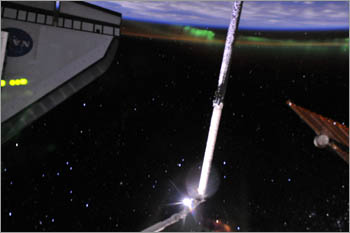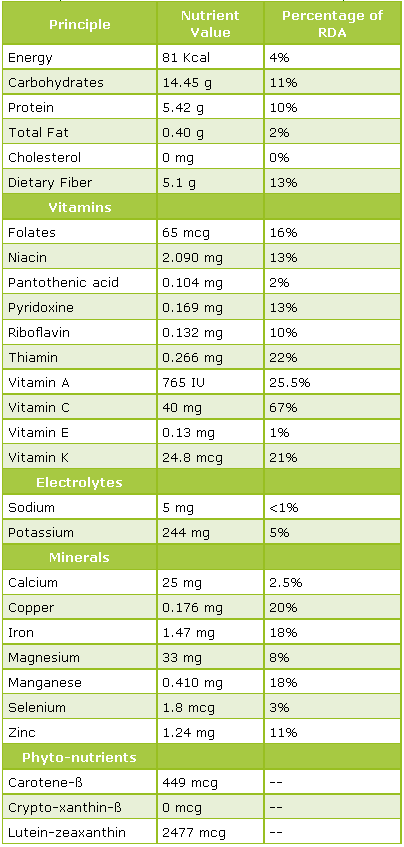In the faintest glimmer of dawn, Atlantis safely touched down Thursday (21/07/2011), ending the flawless final mission of NASA's space shuttle program.
With Commander Chris Ferguson at the helm, Atlantis landed at Kennedy Space Center at 5:57 a.m. on a cloudless, windless morning. When the orbiter's wheels stopped a minute later, NASA saluted 30 years of triumph and tragedy for a shuttle program that has kept the United States at the forefront of manned space flight since 1981.
"The space shuttle changed the way we view the world and changed the way we view the universe," Ferguson said. "We have emotion today, but one thing is indisputable: America is not going to stop exploring.
"Thank you Columbia, Challenger, Discovery, Endeavour and our ship Atlantis," Ferguson continued, acknowledging the other orbiters. "Thank you for protecting us and bringing this program to such a fitting end. God bless all of you. God bless the United States of America."
The mission, Atlantis' 33rd and the shuttle program's 135th, carried a year's worth of supplies to the International Space Station. It equipped and stocked that space lab to become the new centerpiece of NASA's manned space flight program until the agency can develop the deep-space rockets it wants to build. That could take a decade or more.
"Everything worked just flawlessly," NASA Associate Administrator Bill Gerstenmaier said of Atlantis' final mission.
The $100-billion space station, with a six-member international crew — currently three Russians, two Americans and one Japanese — has been the crowning achievement of the shuttle, which was first launched in April 1981 as a do-all space truck capable of science, military, commercial and exploration missions.
The five shuttles launched satellites and space probes; they deployed some of humanity's great observatories, including the Hubble Space Telescope.
There was also heartbreak. In 1986, Challenger exploded shortly after liftoff, killing seven astronauts, and in 2003 Columbia broke up reentering Earth's atmosphere, also killing seven astronauts.
"It's been an extraordinary spacecraft," said Marion Blakey, president of the Aerospace Industries Assn. "And I think it's fair to say has pioneered work in a variety of areas beyond simply accomplishing what is an extraordinary feat, that is building the International Space Station."
Atlantis — which will go on exhibit at Kennedy Space Center — will join Discovery and Endeavour in retirement. Endeavour will become the centerpiece of a new wing at the California Science Center in Los Angeles.
11 Incredible Photos of the Space Shuttle on Its Final Mission
 |
| Taken by astronaut Ron Garan, who’s serving a stint at the International Space Station, this pic shows Atlantis about 600 feet below the ISS, with the Bahamas as a backdrop. |
 |
| Atlantis pilot Col. Doug Hurley snapped this pic of Garan during a spacewalk, with the Earth “upside down." |
 |
| It looks almost like a model, but this pic from ISS engineer Satoshi Furukawa shows the Atlantis on final approach to the ISS. |
 |
| Garan took this photo during a spacewalk; it shows the ISS and Atlantis (its nose is peeking out on the right). |
 |
| ISS crew member Mike Fossum shot this photo of Garan “standing on top of the world" during a spacewalk. Note the shuttle’s Canadarm and fin to the left of Garan. |
 |
| The blurred clouds on the earth below give the illusion of motion in this amazing shot of Atlantis, packed and ready for its return journey, from Fossum. |
 |
| Atlantis’ wing peeks into this great photo, from Furukawa, of green auroras over Australia. |
 |
| From Furukawa, a photo of the shuttle docking to the ISS taken from the Cupola, the “ultimate" observation deck. |
 |
| Yet another picture of Garan, shot by Fossum. You can see Atlantis in the background, with Earth’s terminator line between night and day making for a dramatic background. |
 |
| Garan shot this photo of Atlantis’ rear with the French and Italian rivieras in the background. |
 |
| Taken from the shadow side of the shuttle, it’s the contrast that gives this photo of Atlantis pointing “down" its impact. Shot by Garan from engineer Sergey Volkov’s window. |
Space Shuttle Atlantis Final Landing at Kennedy Space Center





































